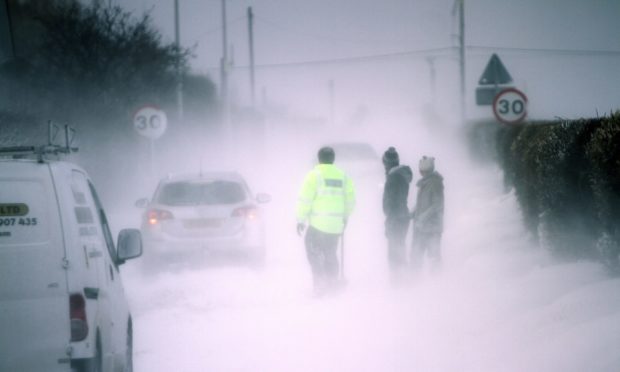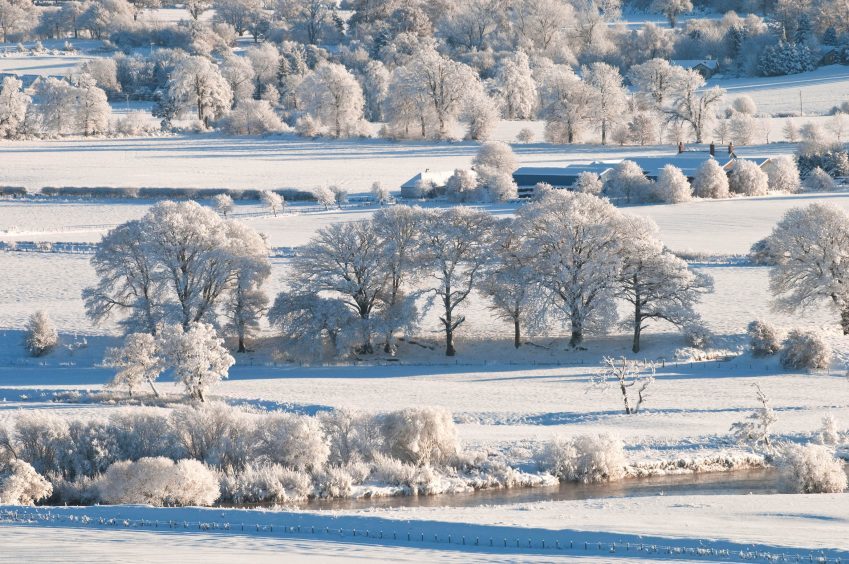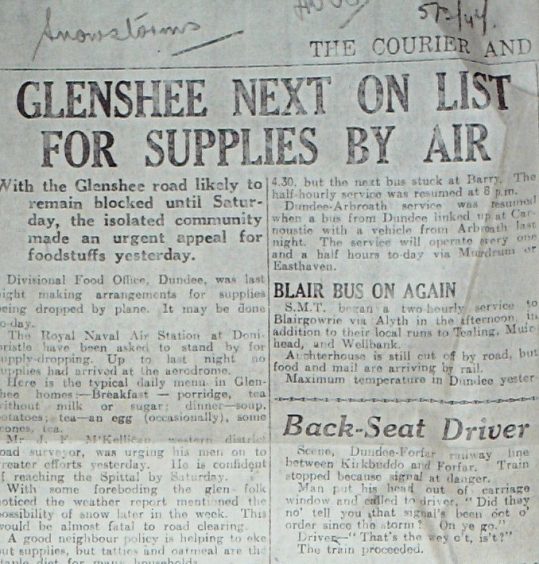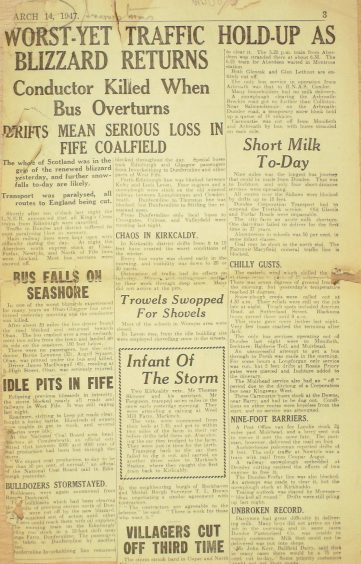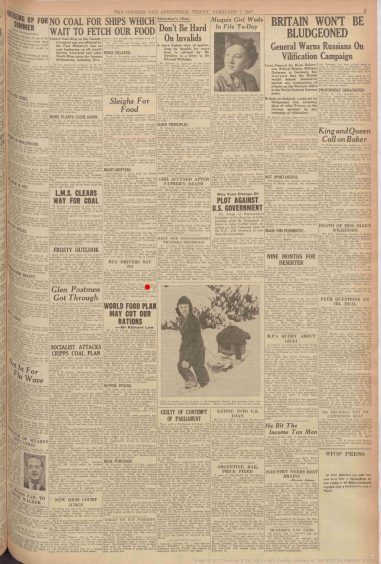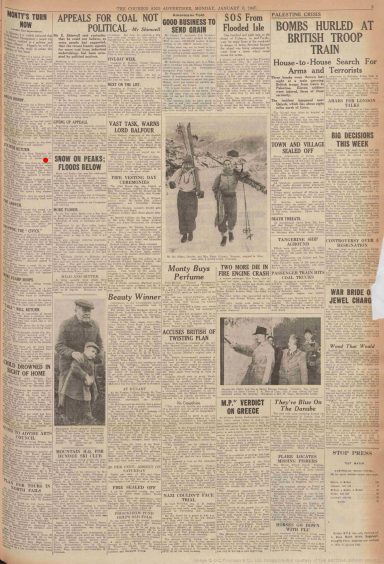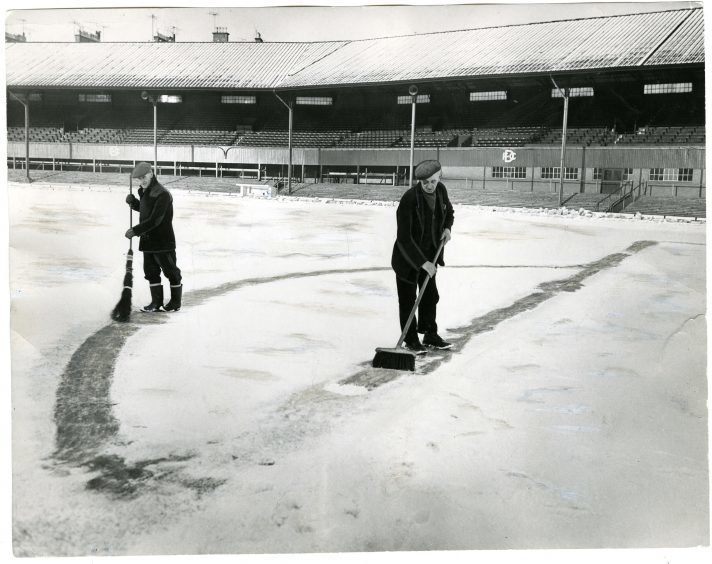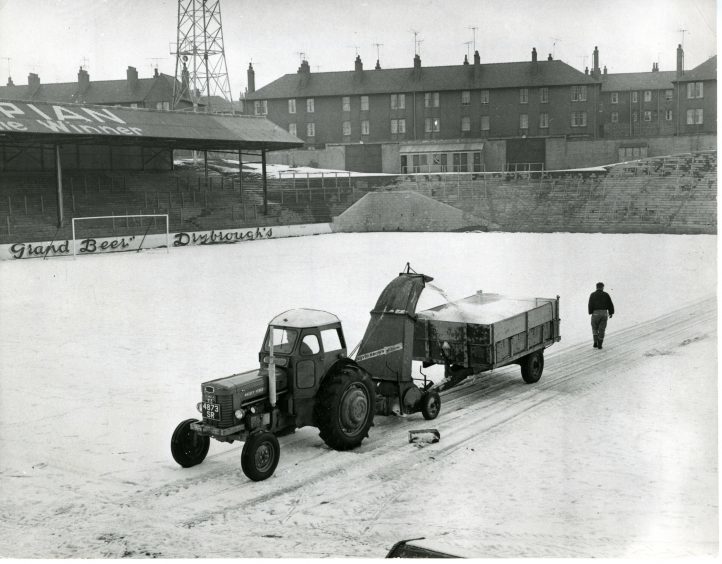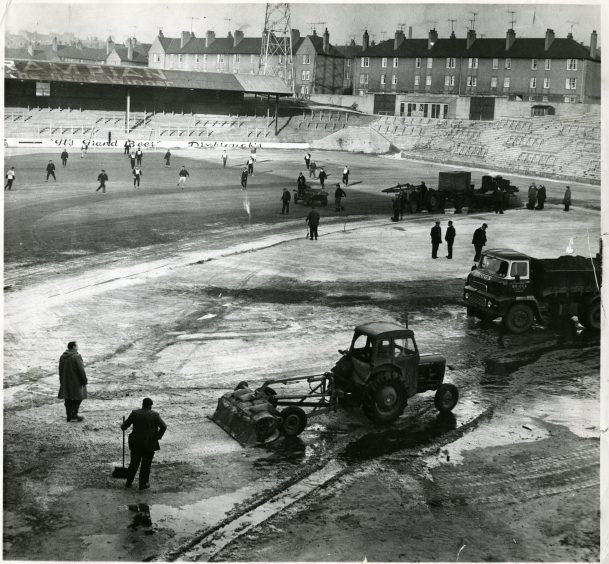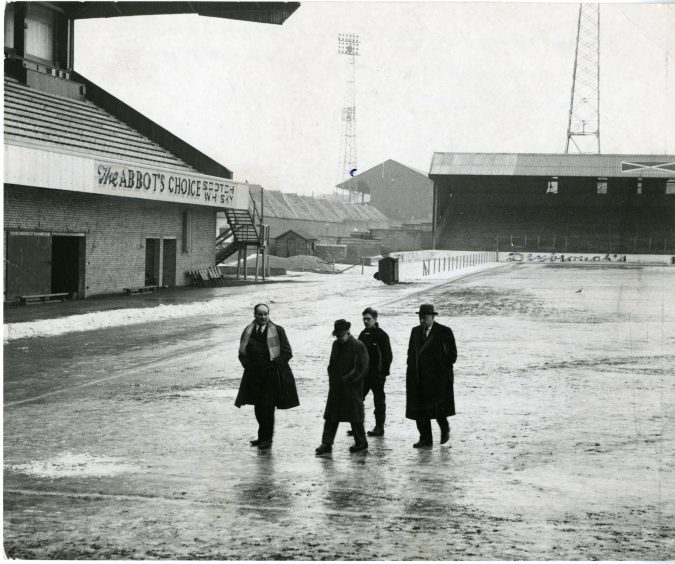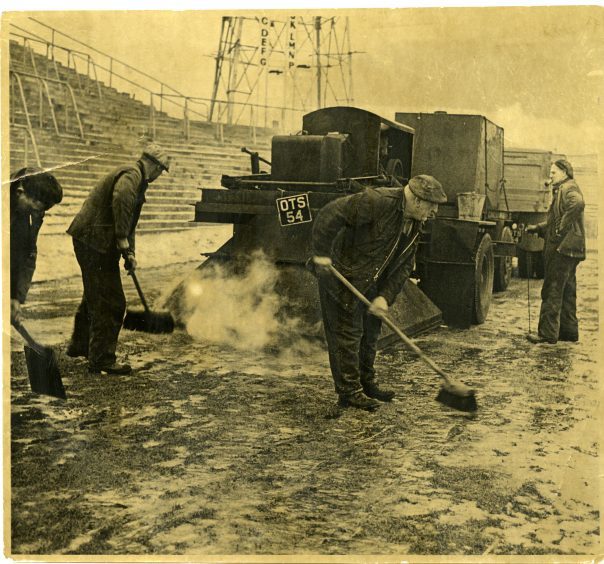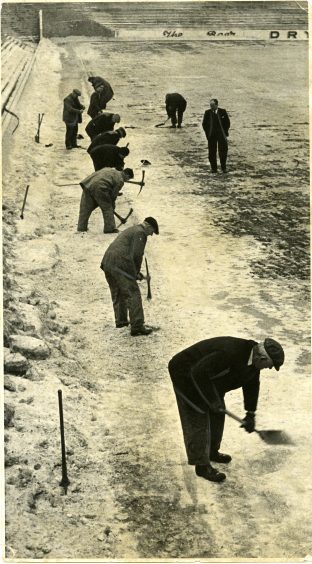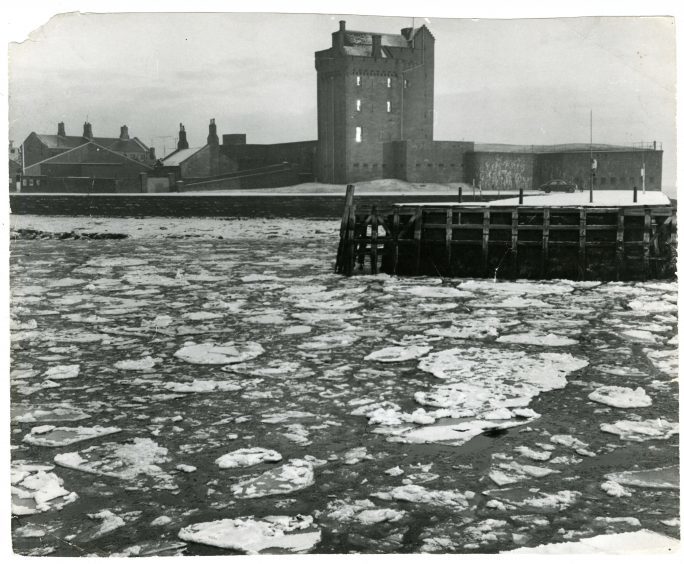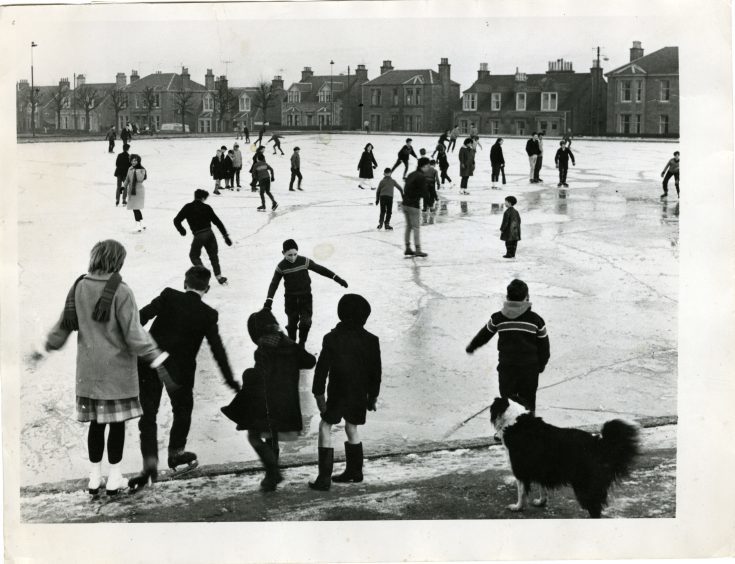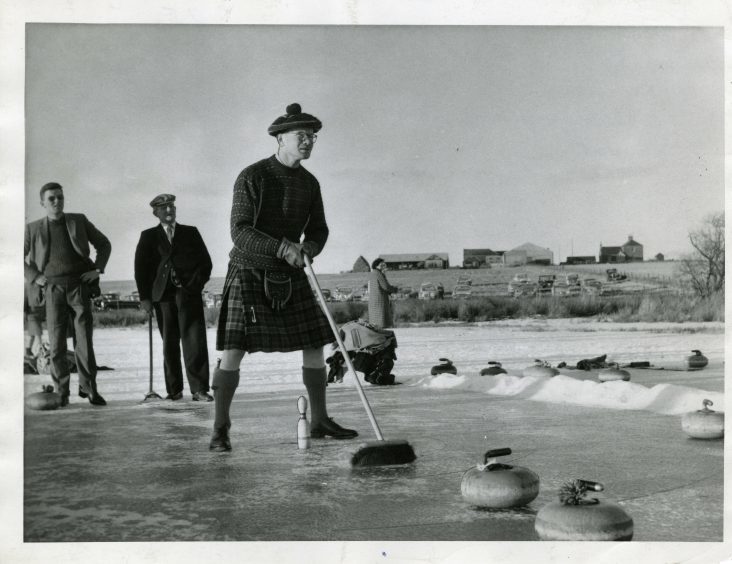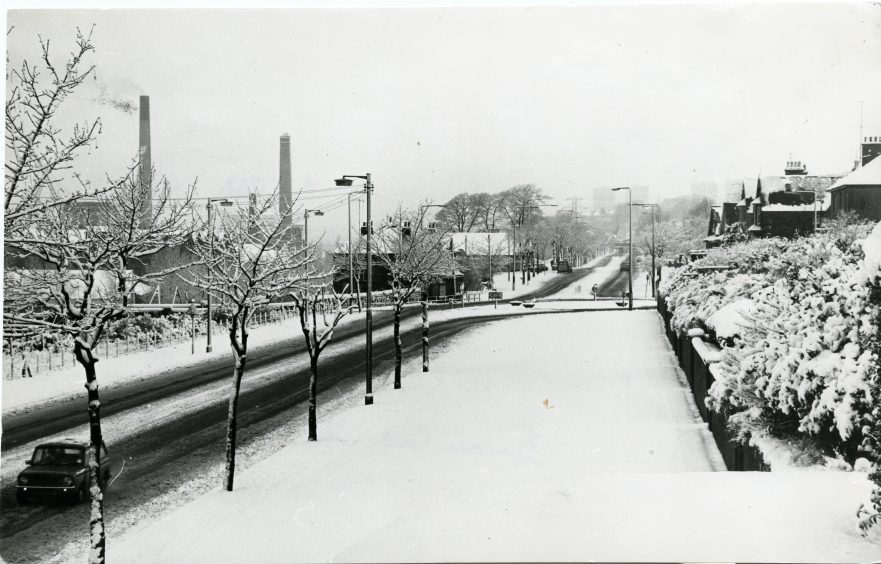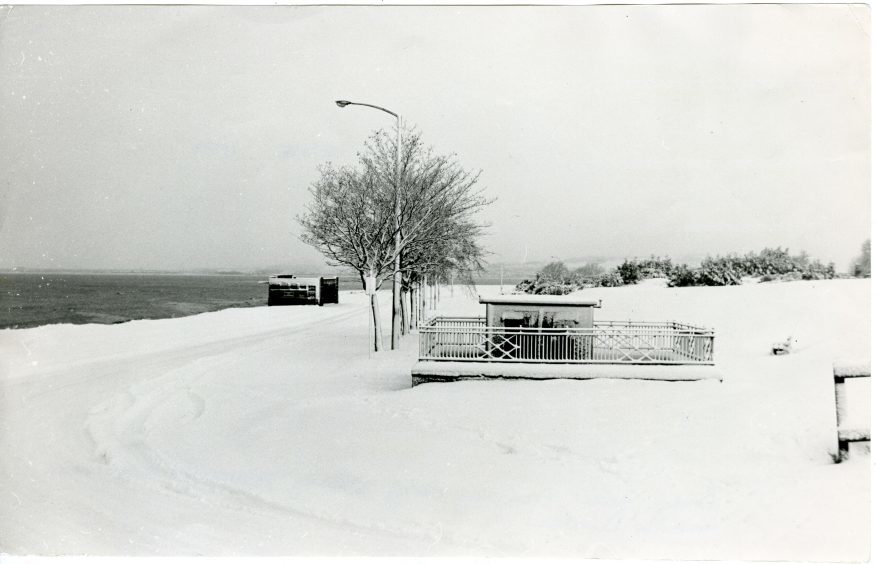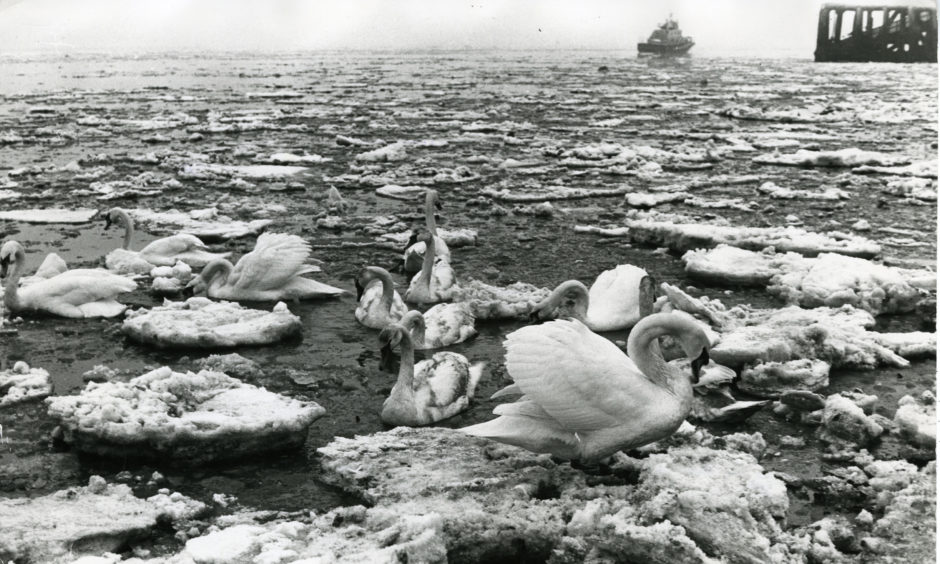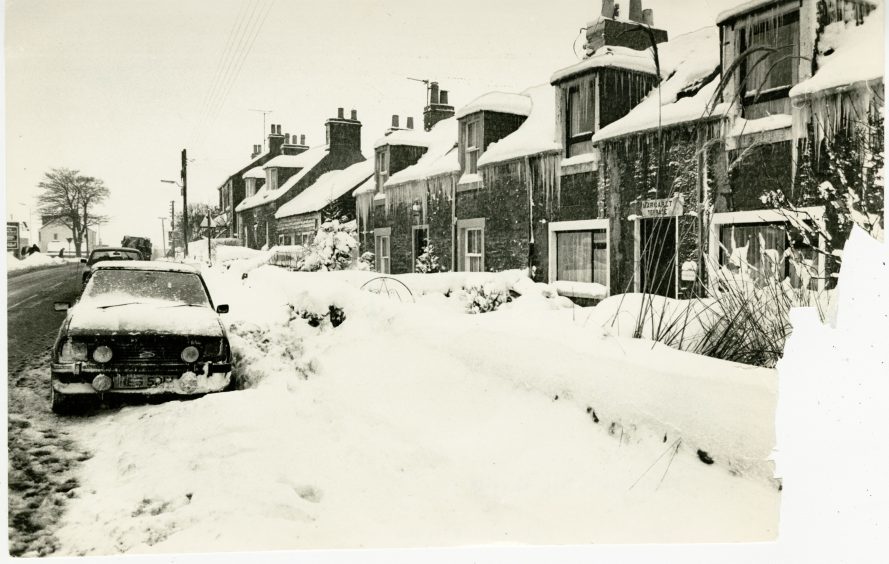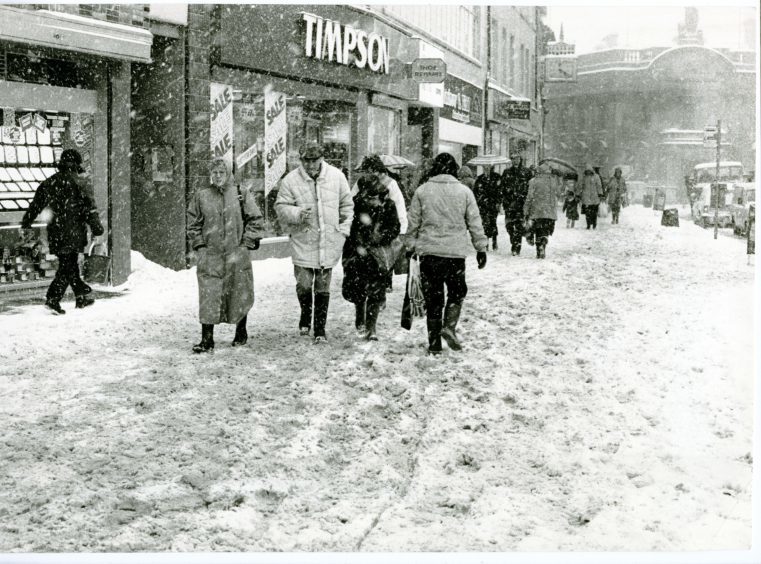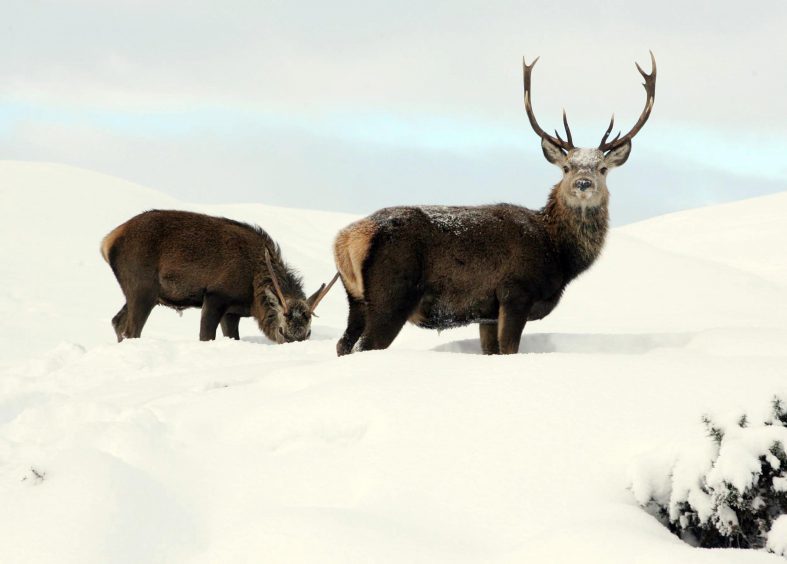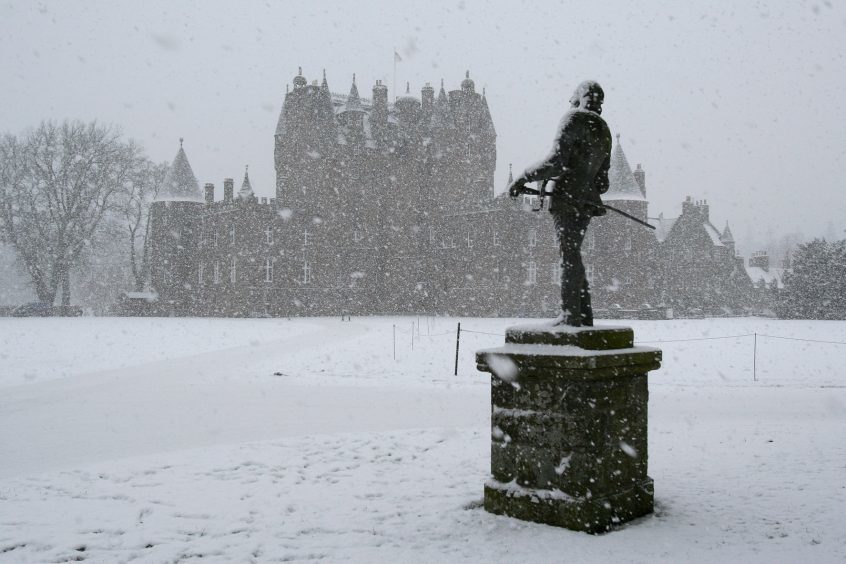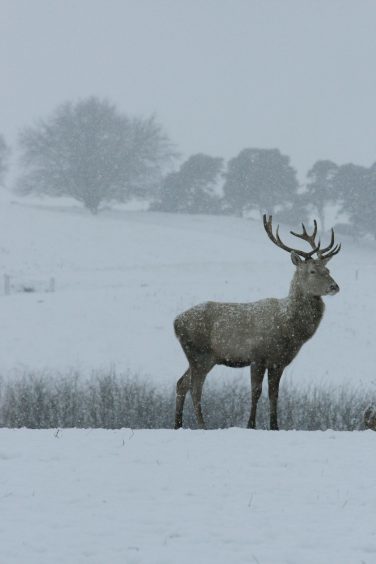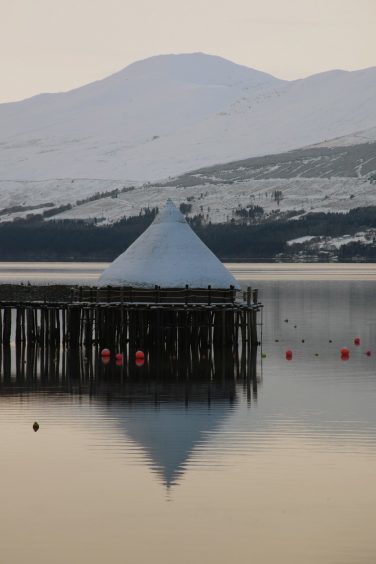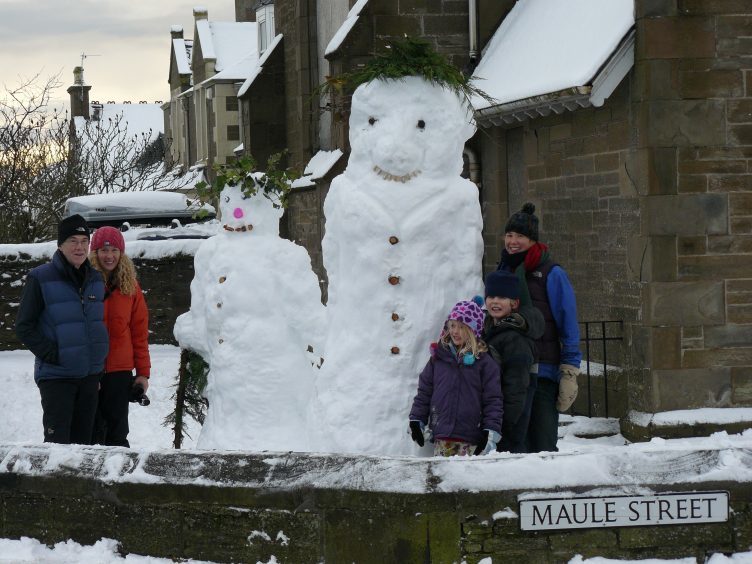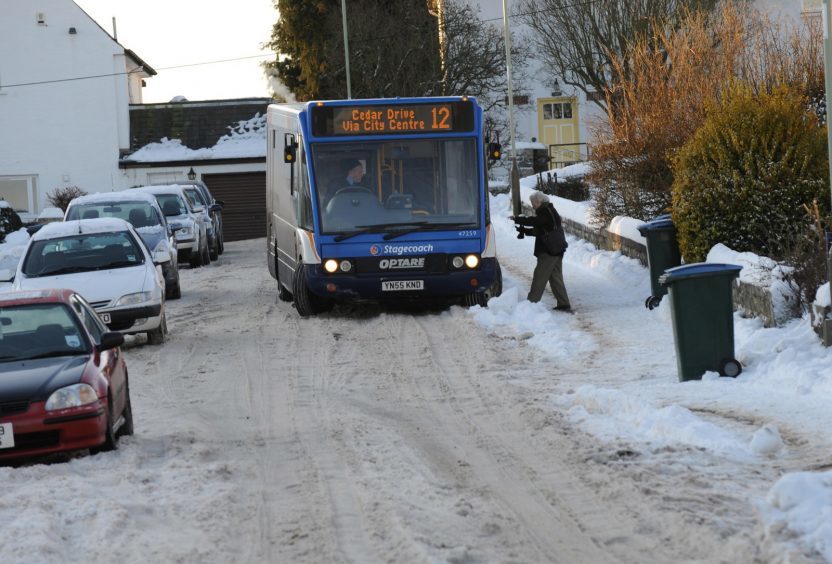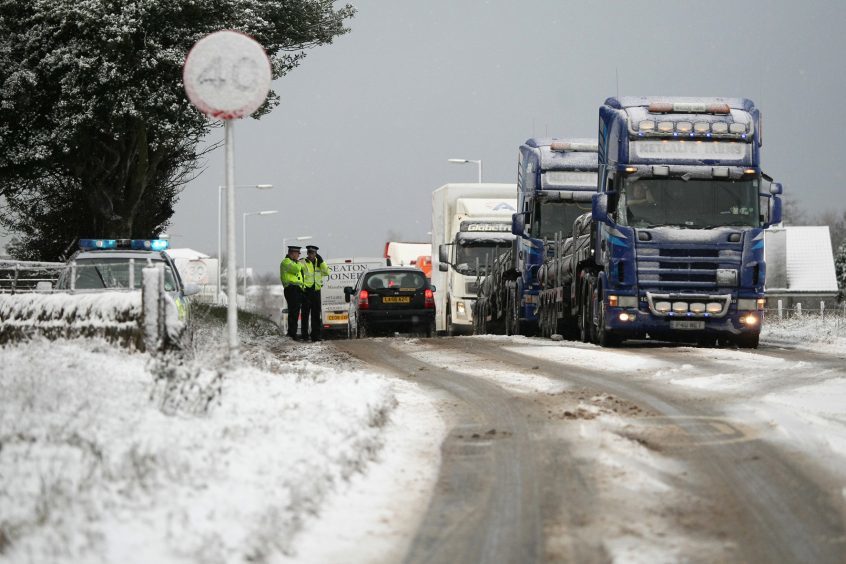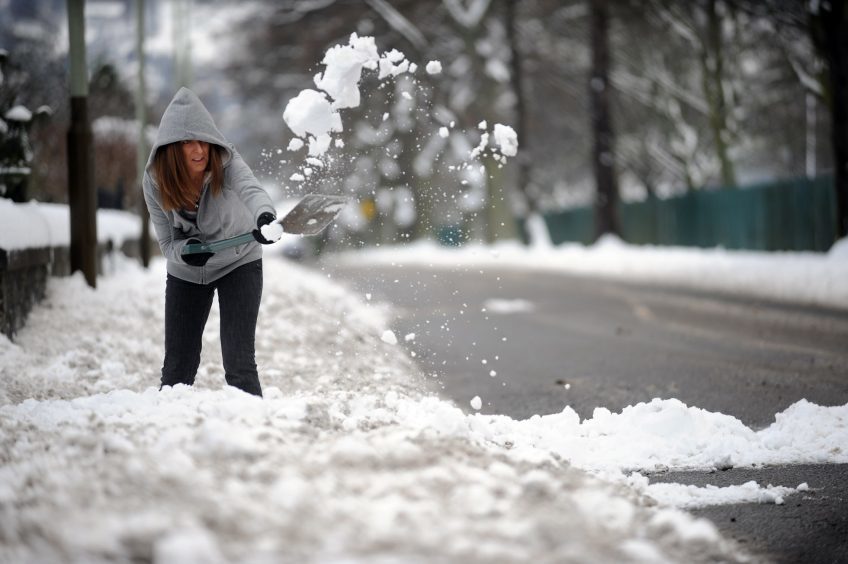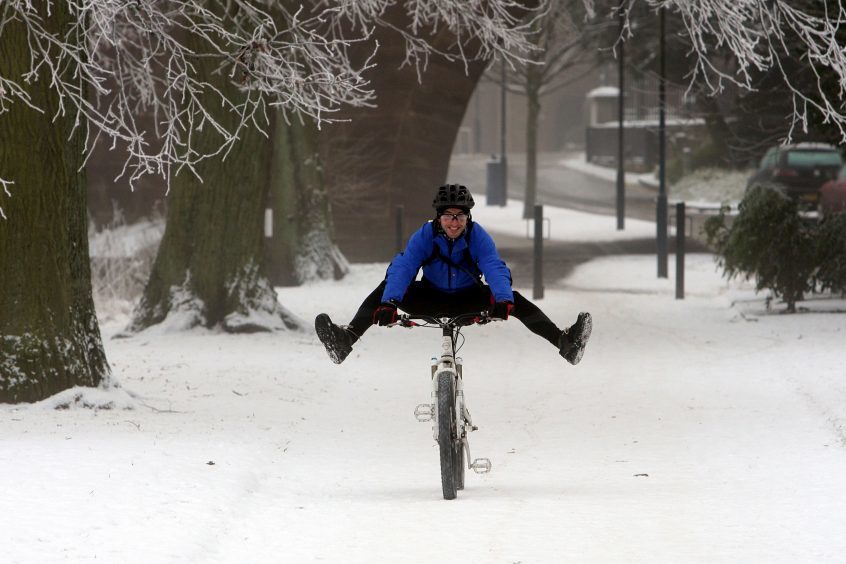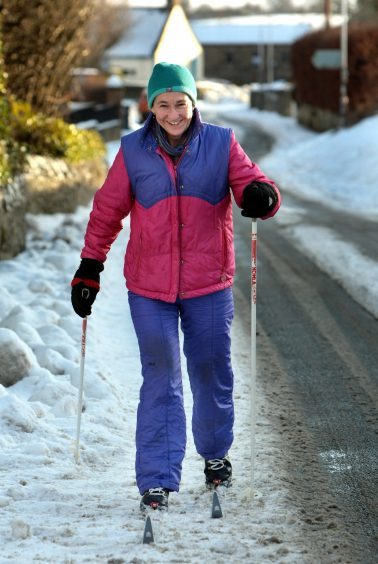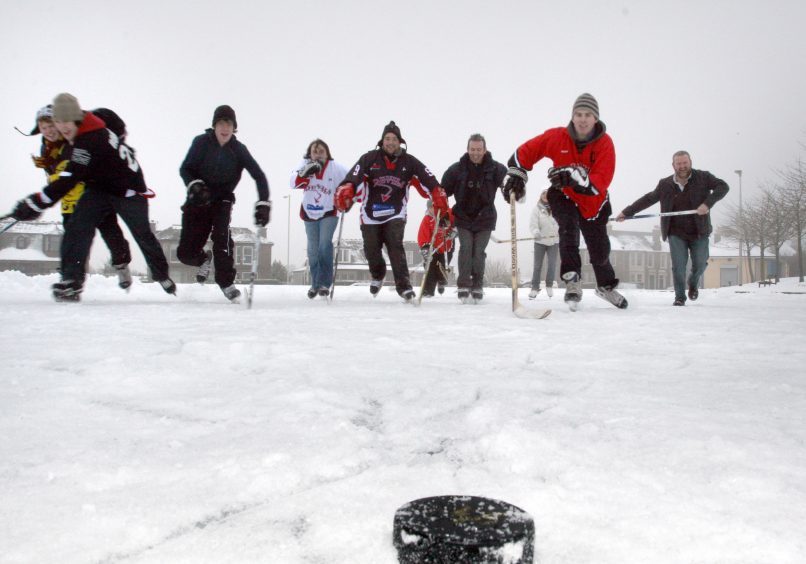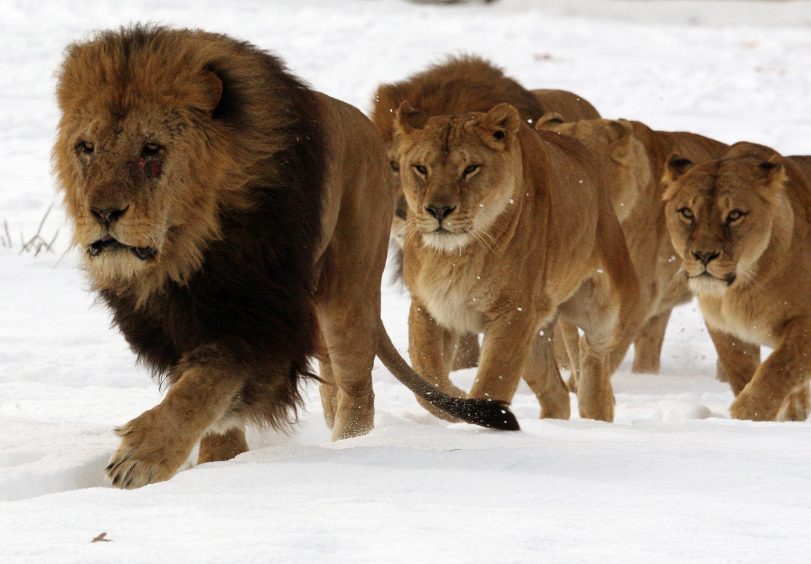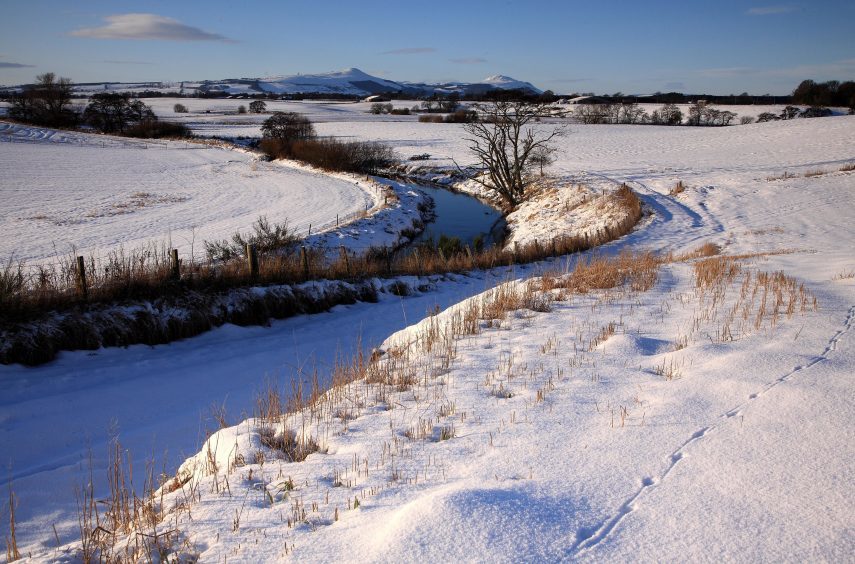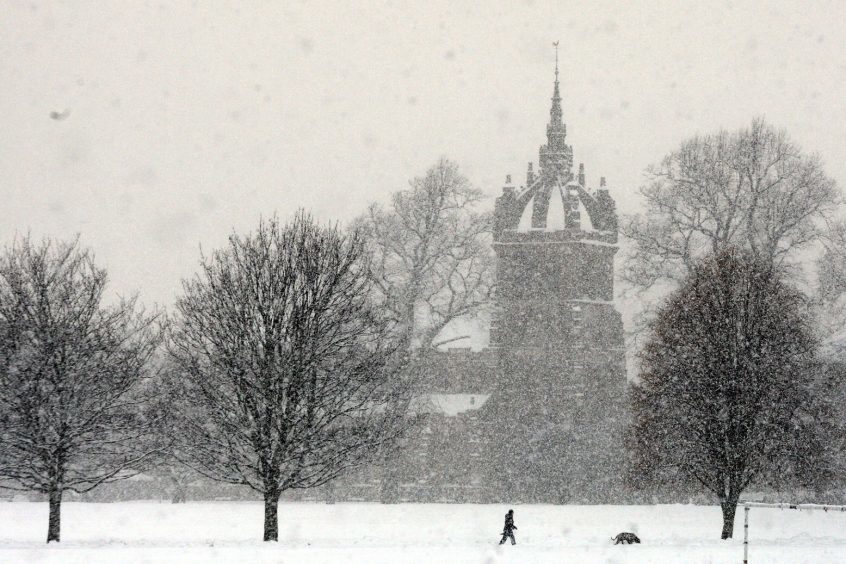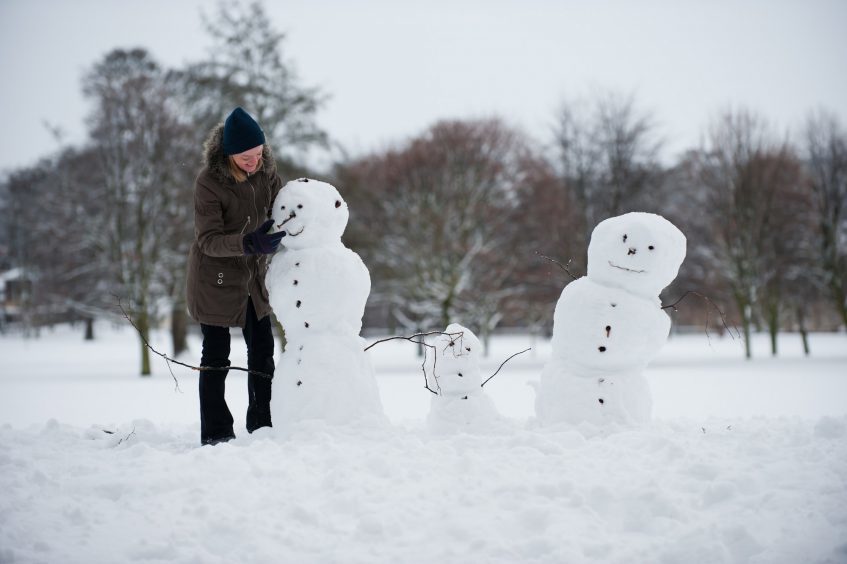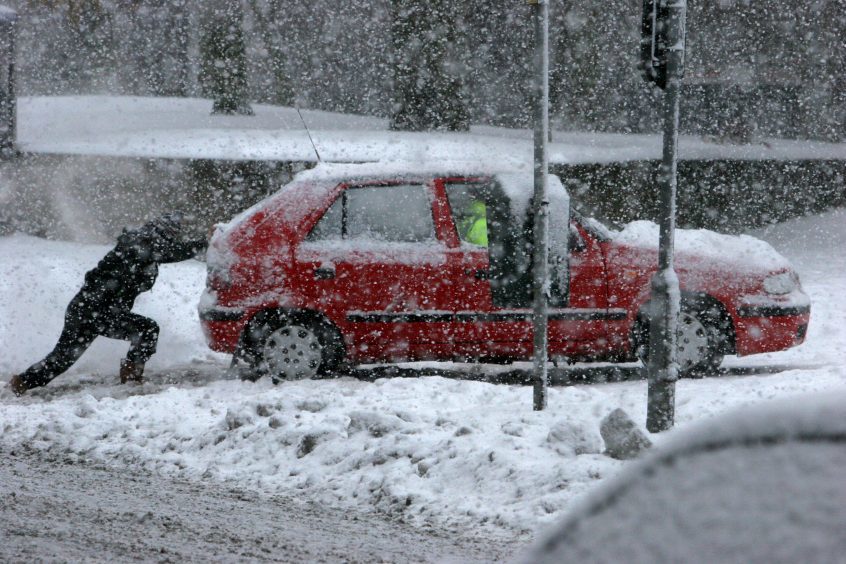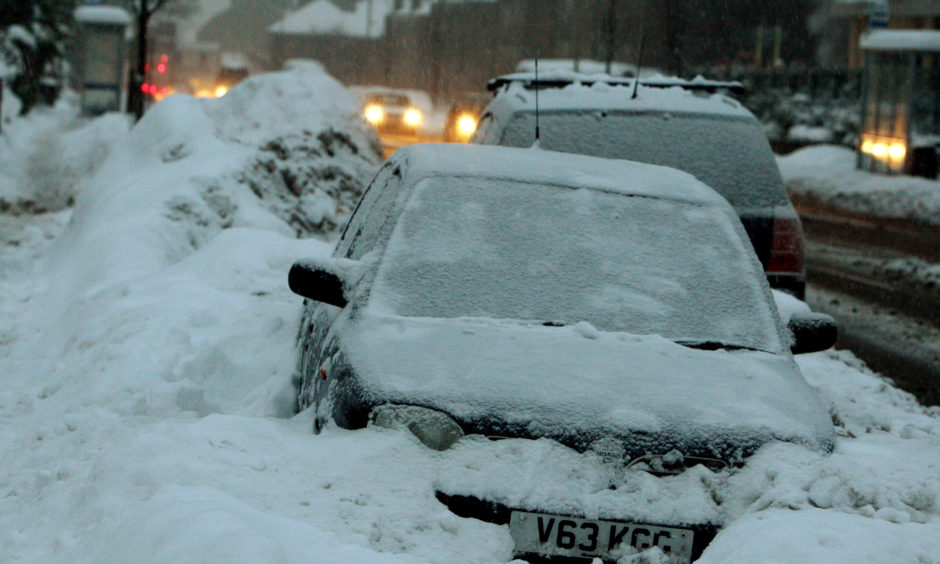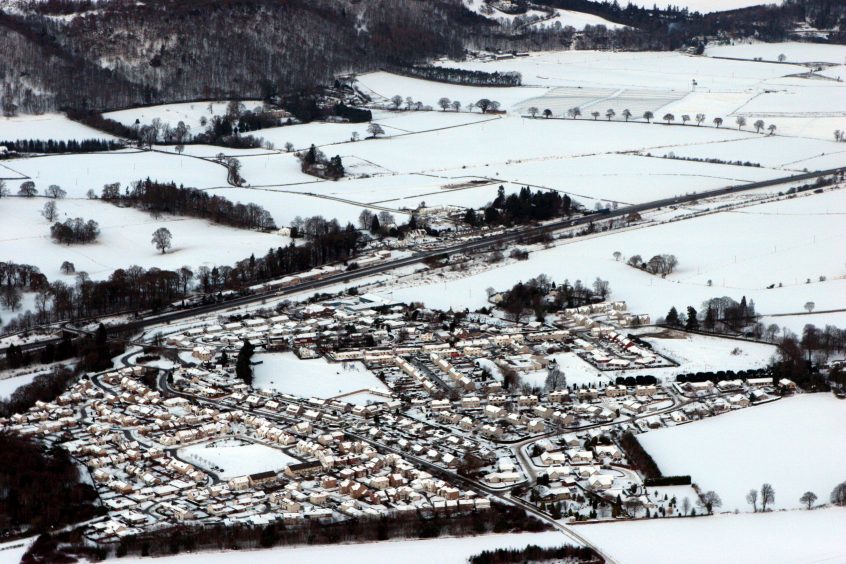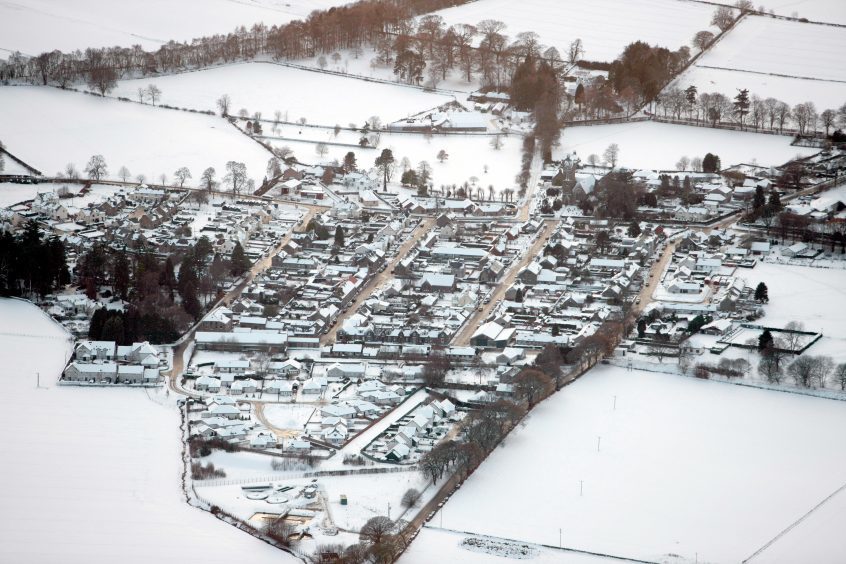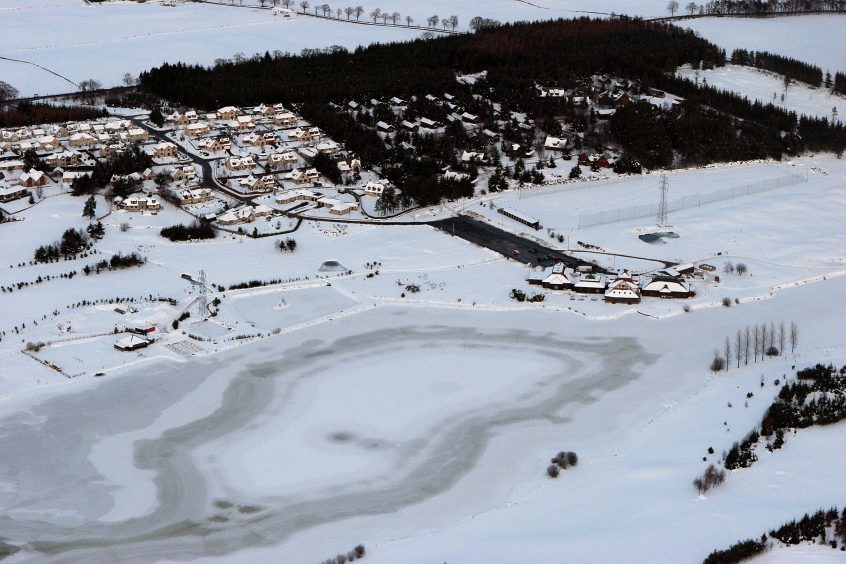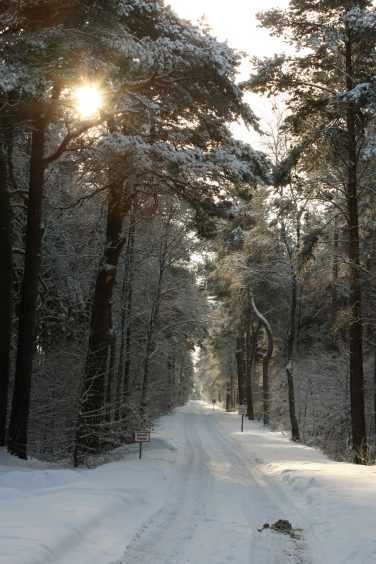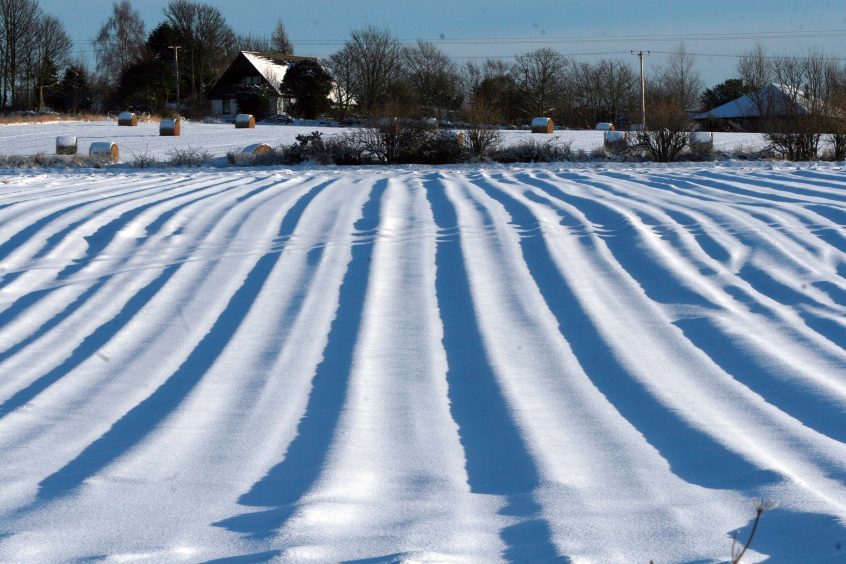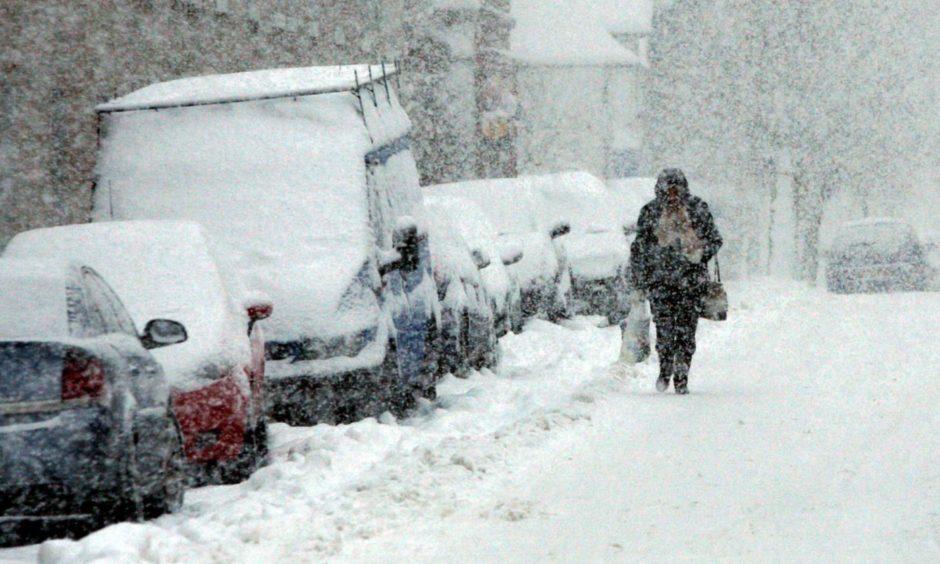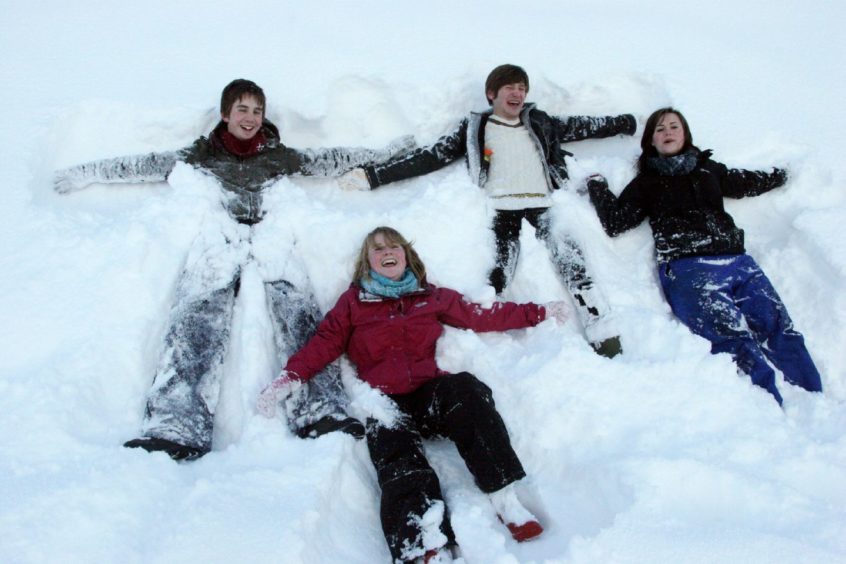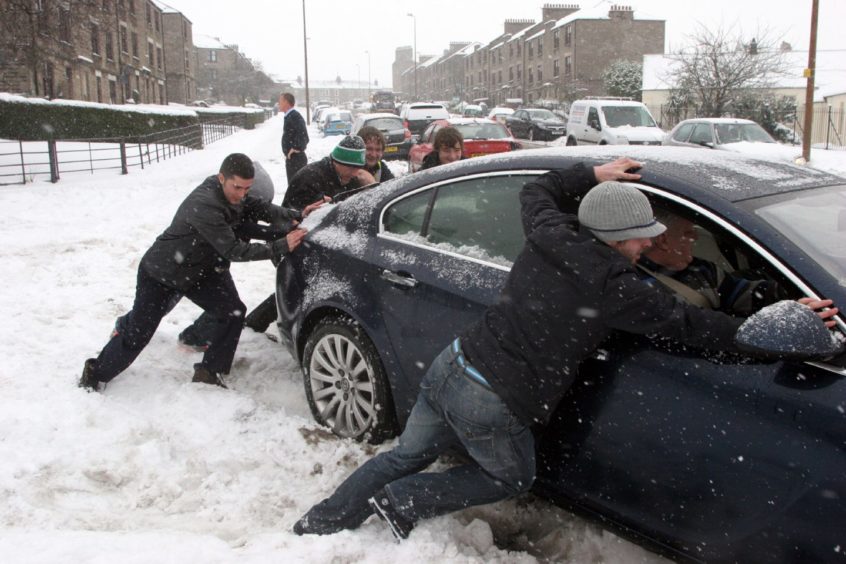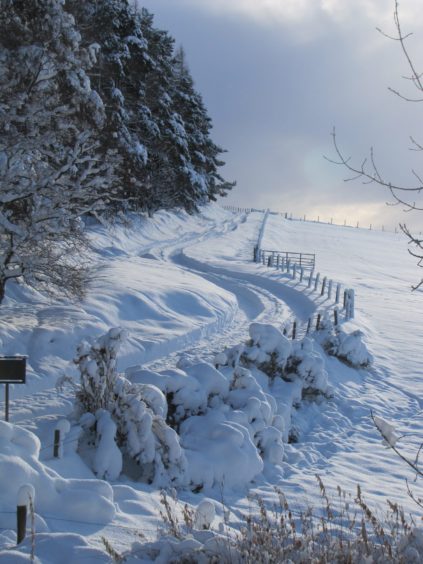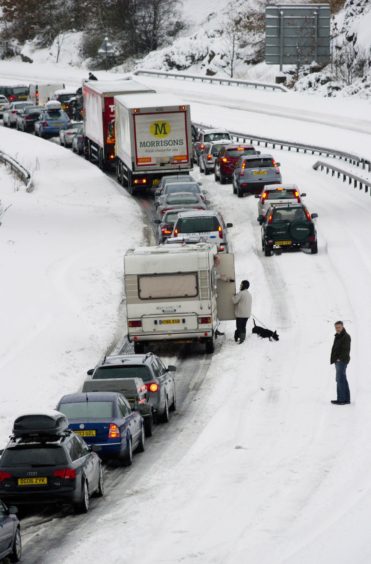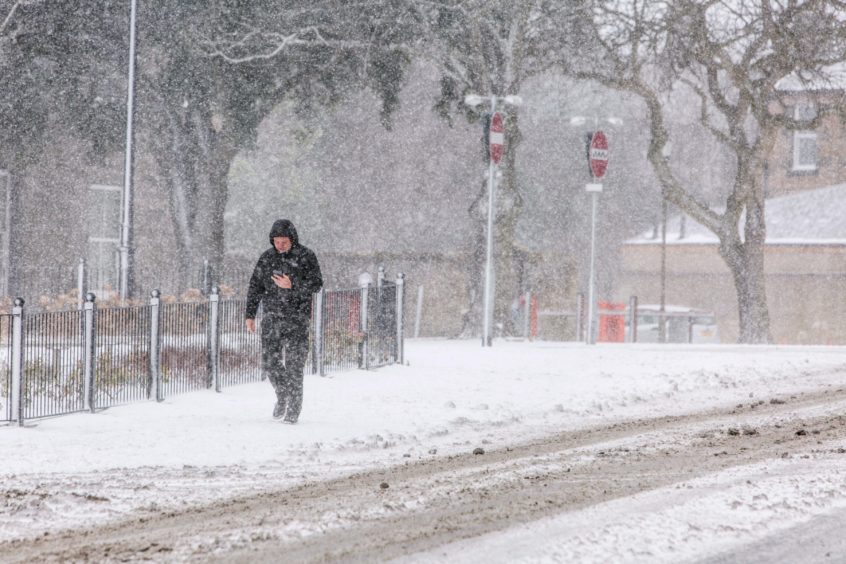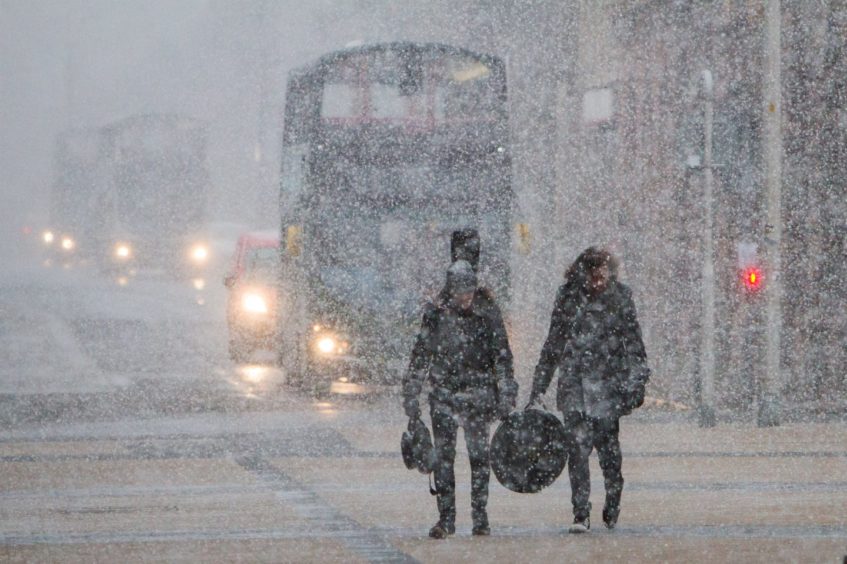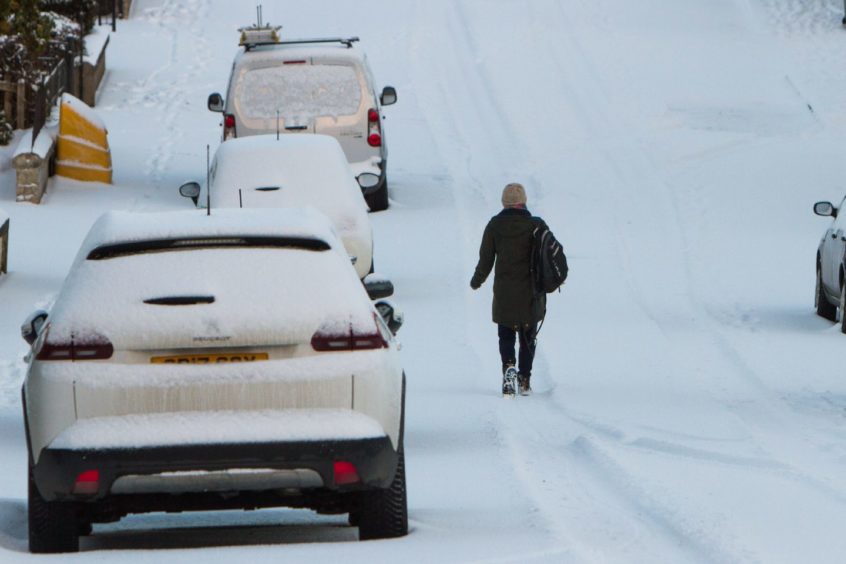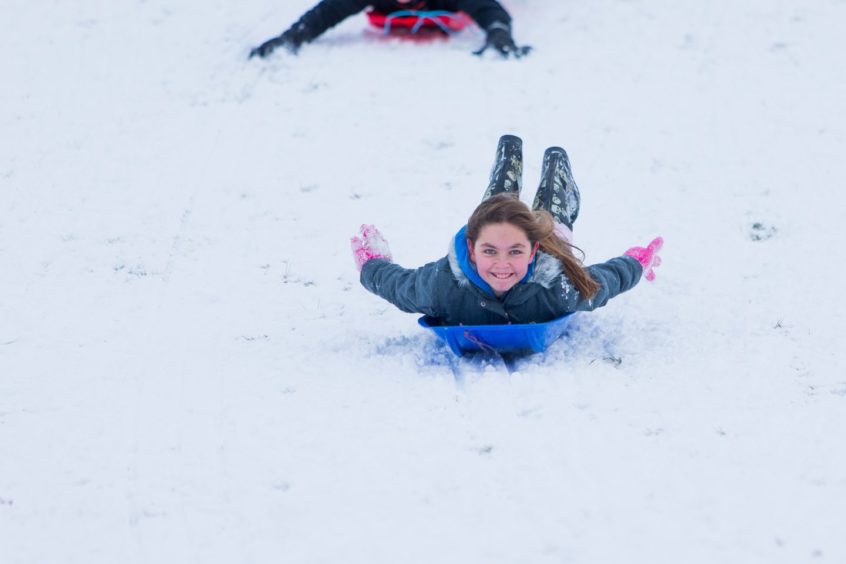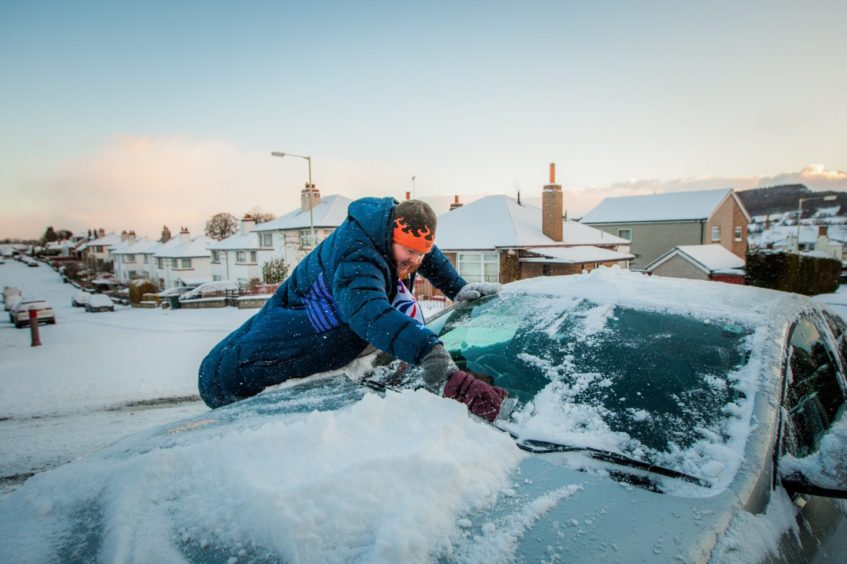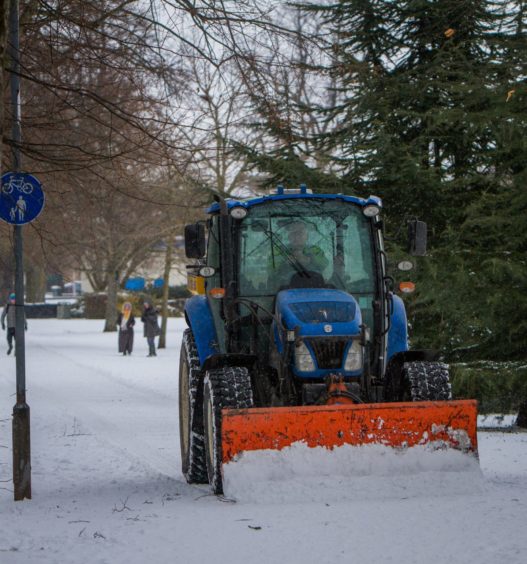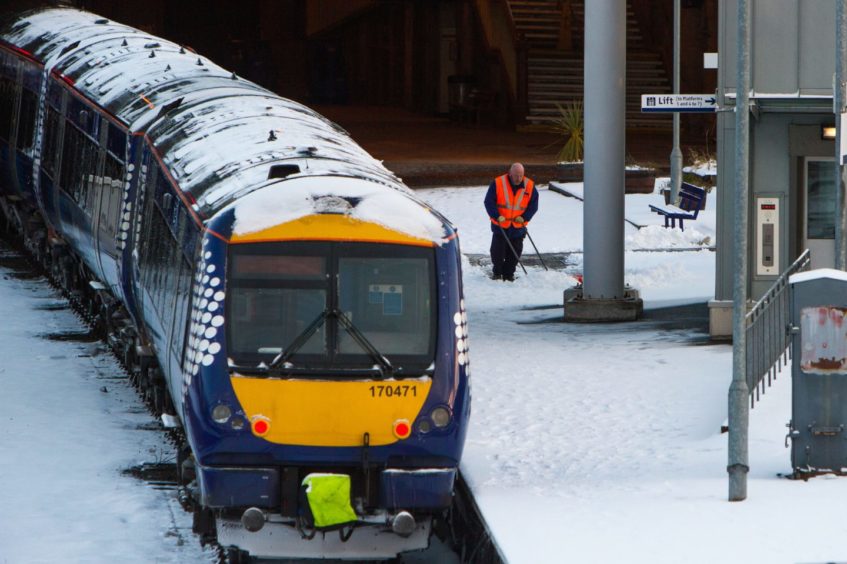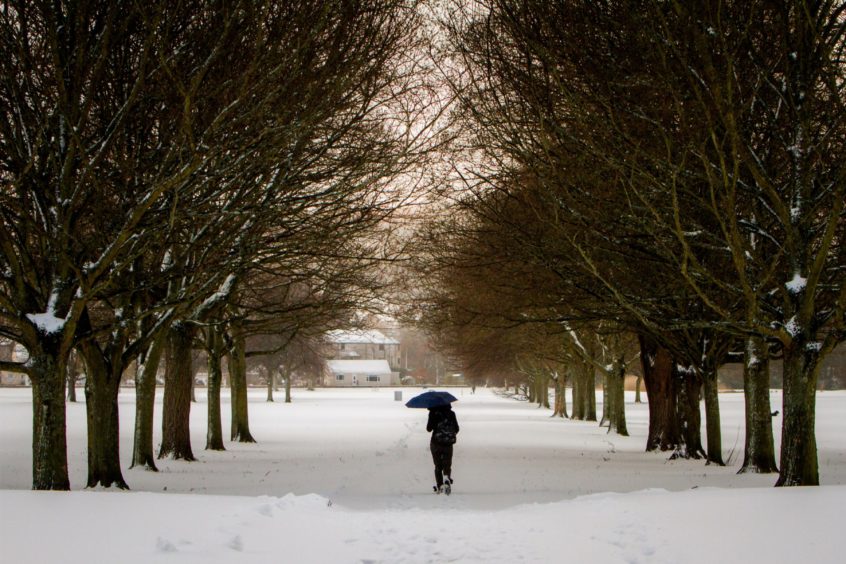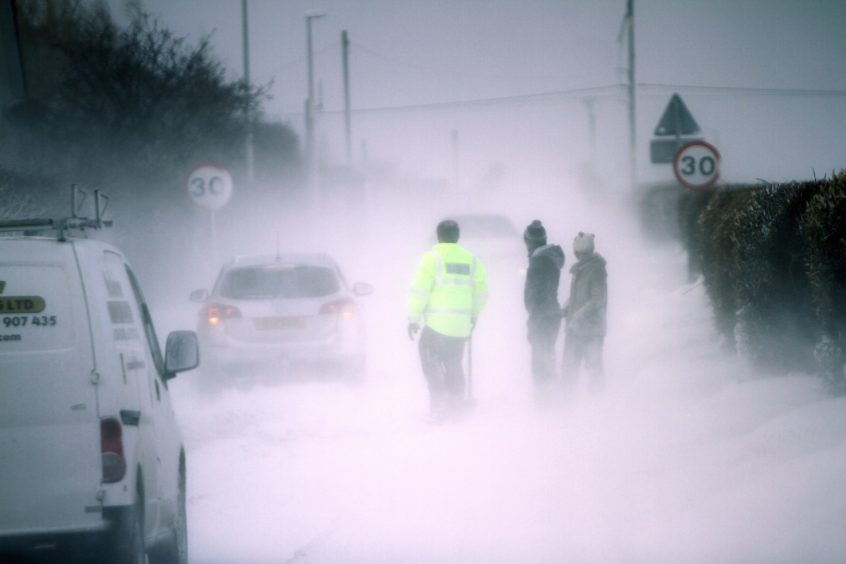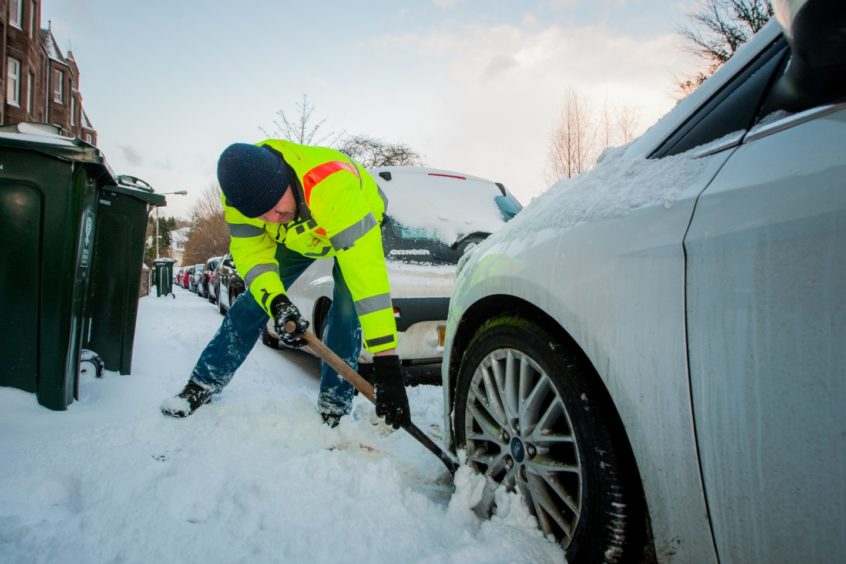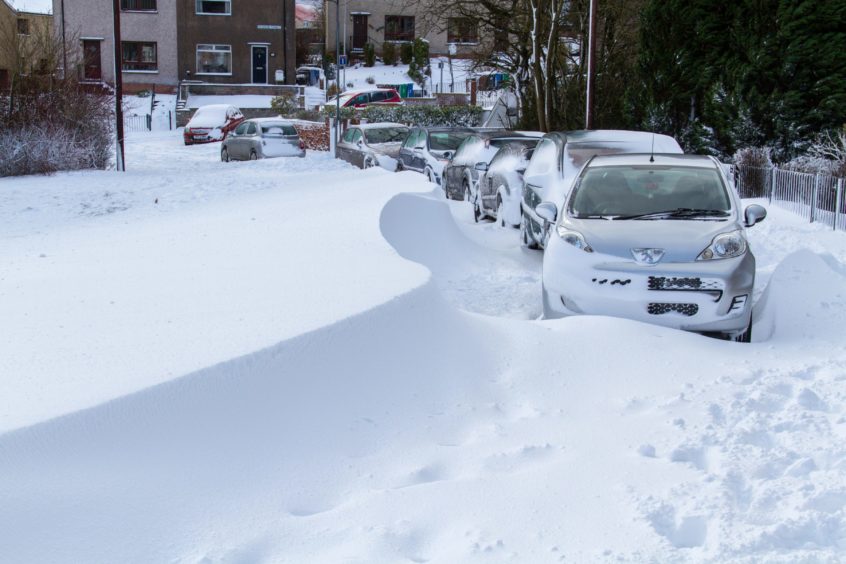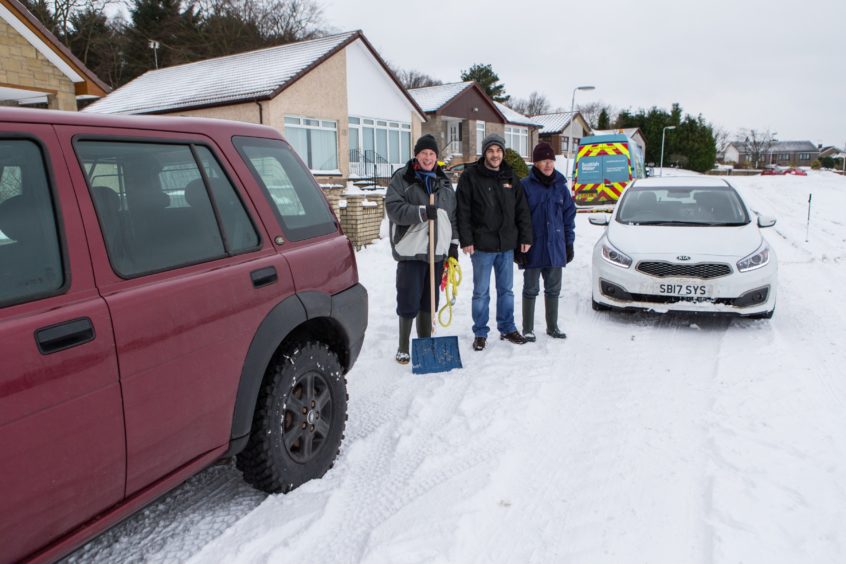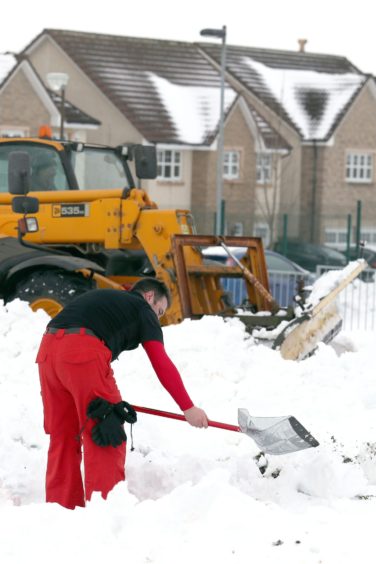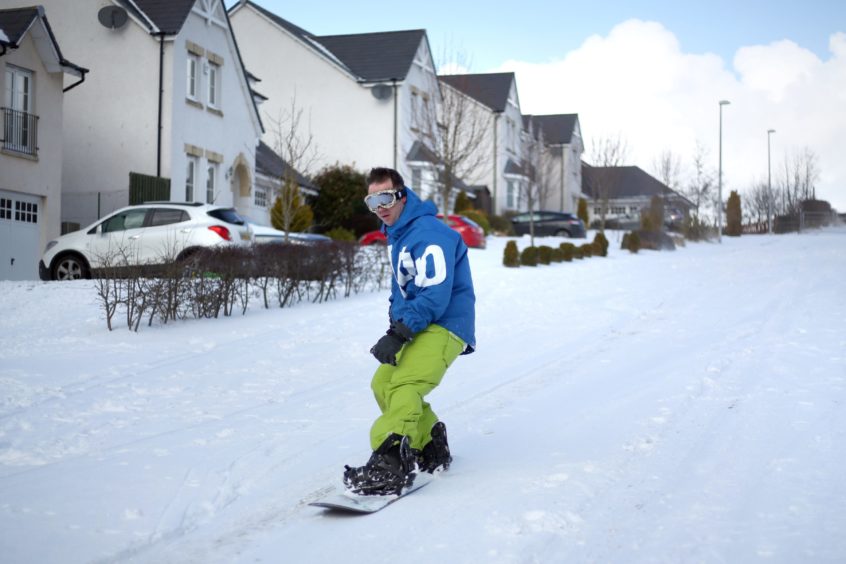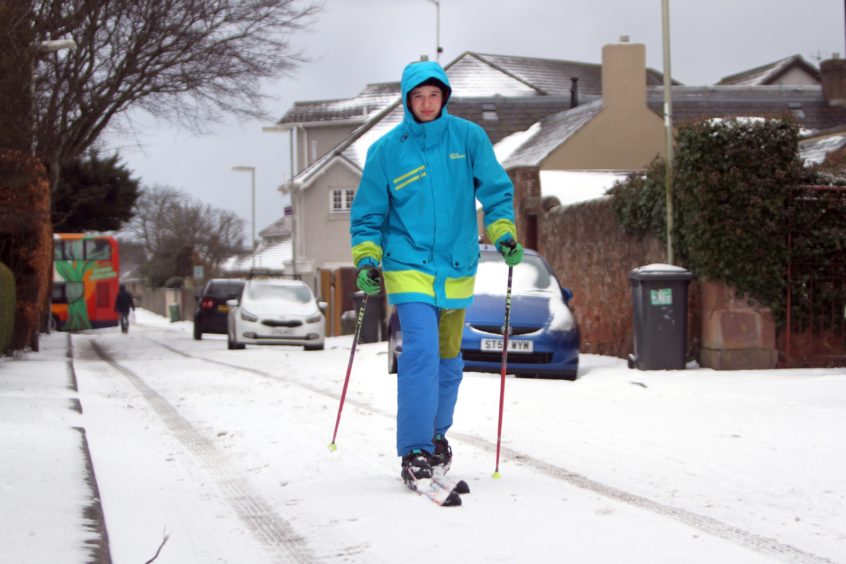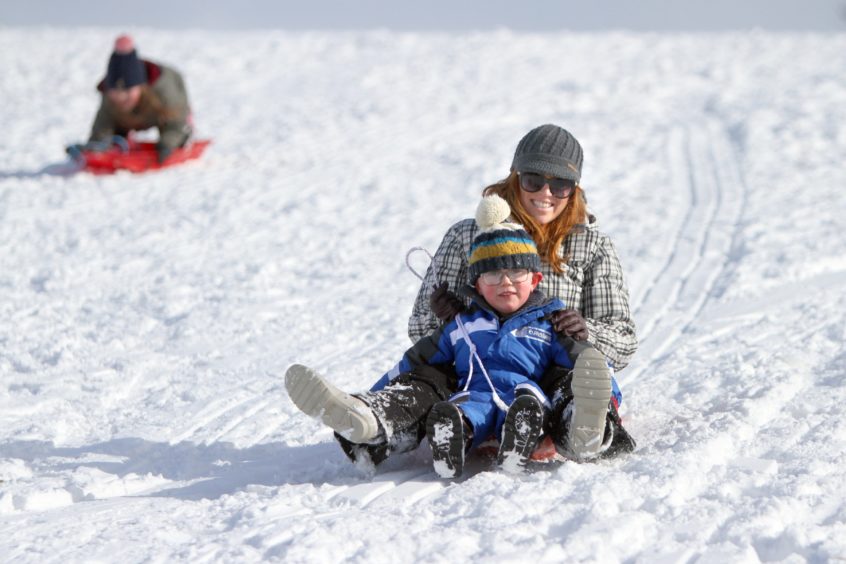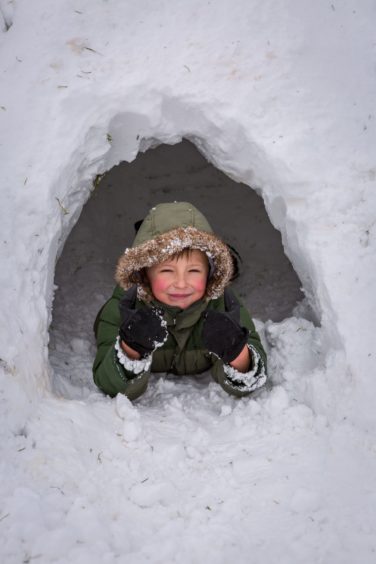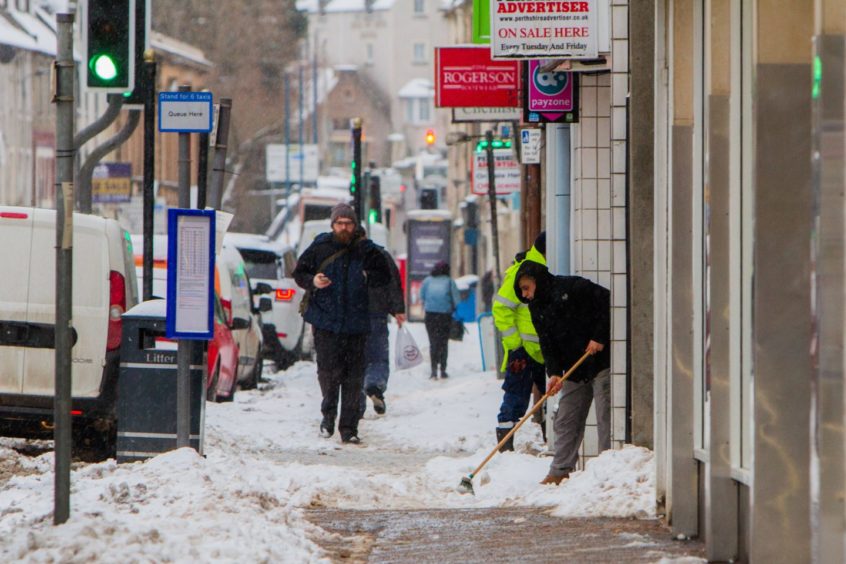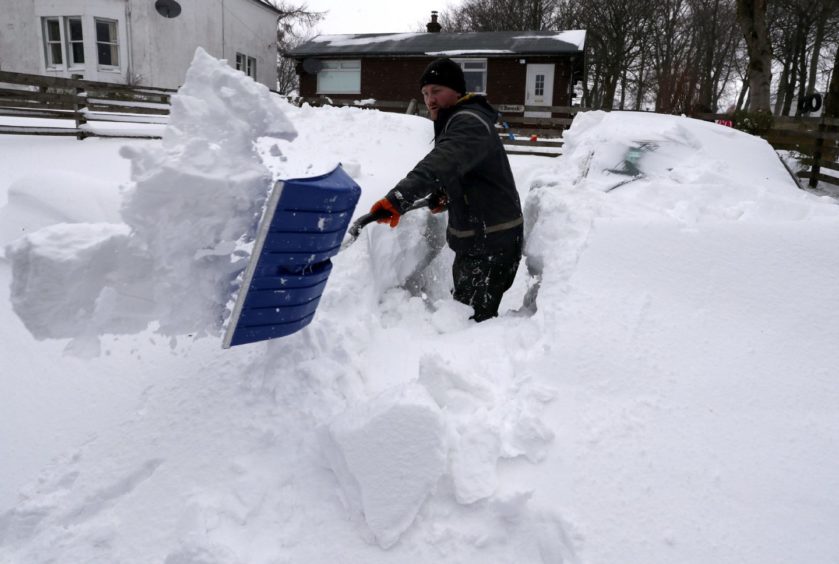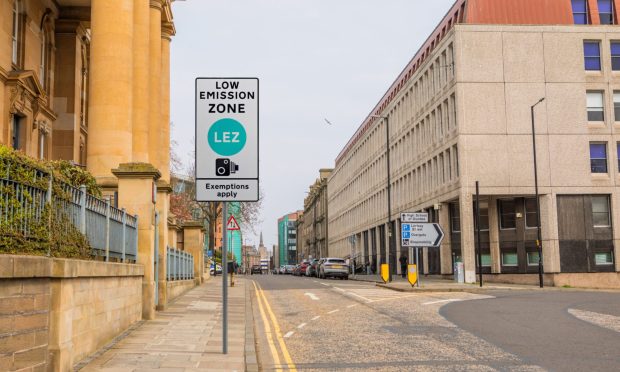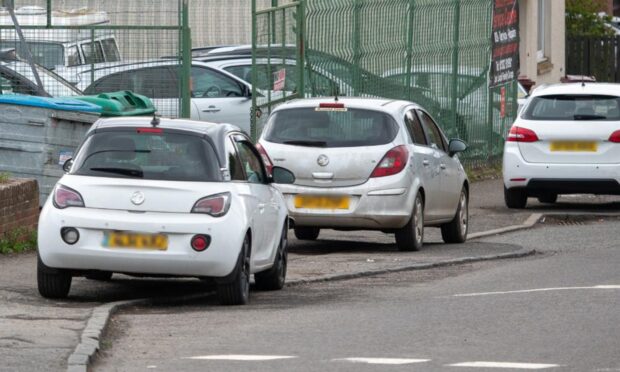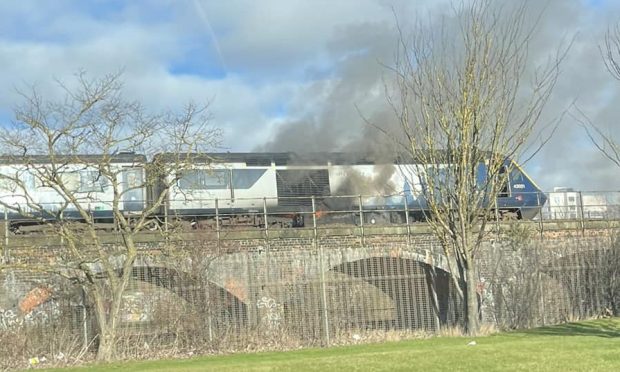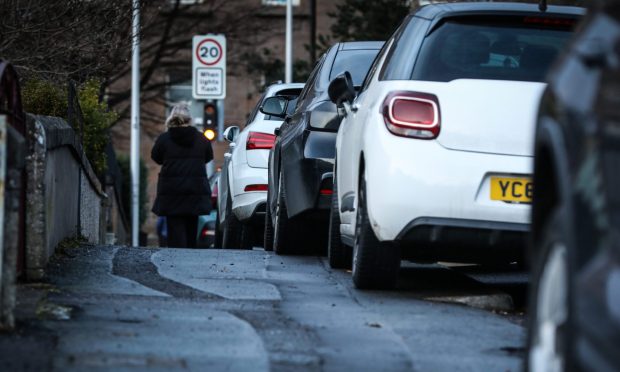The winter weather is returning to Tayside and Fife in the midst of one of the strangest festive seasons in living memory.
While the recent cold snap hasn’t been on the extreme side, we haven’t always been so lucky in the past. Throughout the years locals have endured several brutal winters which have tested the resilience of our communities.
We’ve decided to look back on some of the most famous frozen spells from Tayside and Fife’s recent history.
1947: One of the UK’s most legendary winters
This was one of Britain’s most famous winters, and Courier country did not escape it. Easterly winds brought snowstorm after snowstorm to the UK during one of the biggest white-outs since the 19th-century.
January 1947 brought snow and floods to Perthshire. Though skiers lapped up the conditions at Glenshee, farms and roads were reported to have flooded across the Tay Valley.
The weather endured until February, with a report in The Courier on the 6th stating that roads in Arbroath and Montrose had been “buried” in snow. A “force” of some 800 men kept the streets of Dundee clear. However in Perthshire there were reports of farmers and shepherds hauling provisions on horse-drawn sledges. The Angus Glens was also hit by “severe” conditions.
The worst of the weather hit Tayside in March. It was so bad for some in Glenshee that food supplies had to be airdropped to homes. On March 13 of 1947, the “worst traffic block of the winter” was reported in Tayside with only three roads left open. Scotland as a whole was left “cut off” from England by road and rail. Miners in Fife were unable to reach their work due to the conditions, resulting in major production losses. Villages across Courier country were also isolated from the outside world as a result of the weather. On March 14 the longest bus journey out of Dundee was to Inchture – just nine miles away.
1962-63: The Big Freeze
Britain’s famous Big Freeze affected locals across Tayside and Fife from December 1962 into February 1963. The conditions brought widespread chaos to Scottish football fixtures, with some 24 tons of sand delivered to Tannadice to prepare Dundee United for a New Year clash with Queen of the South. Snow blighted communities across the country well into January 1963.
On February 6 1963 major roads including the A9 and A90 were blocked as traffic mounted up during blizzard conditions. The Courier reported traffic being “paralysed” by the weather. Conditions in Fife were described as “chaotic”. People in parts of Scotland were stranded in trains with children even left to spend evenings overnight in schools. On February 8, two helicopters from RAF Leuchars carried out seven rescue missions across Scotland in one day.
During the February of 1963, two Stanley men also became the first people to walk across the frozen River Tay since 1898. Alec O’Brien and brother-in-law Ian Smith managed the feat at Burnmouth. They later abandoned an attempt to repeat the daring crossing on bicycles a few days later.
1978-79: ‘Pandemonium’…and a strange rescue on the Tay
Tayside endured another frozen spell from January into February 1979.
Just after Christmas, winds from the east spread throughout Scotland and brought Arctic conditions. There was a sustained cold spell between January 8 and February 22. Heavy snow came to Dundee and the surrounding area in early January 1979.
Ice floes formed on the Tay near Dundee during this winter. On January 3 two teenagers were rescued by the Broughty Ferry inshore lifeboat near Kingoodie after they became stuck on a drifting slab of ice.
Lows of -9.4C were recorded in Dundee on January 13. Later the same month, blizzard conditions hit Tayside with about 12in of snow reported in Perth on January 30. The poor conditions continued throughout February.
Later in the year, on March 22, police described scenes of “pandemonium” across Tayside and Fife following blizzards.
1987: Seven miles of traffic from Dundee as Tayside hit by blizzards
Heavy snowfall battered Tayside again in January 1987, with blizzards affecting roads across Dundee and Angus. Some locals fell victim to hypothermia during what was described as “appalling” weather conditions from early January.
Eight inches of snow landed in Dunfermline on January 12, and schools were closed right across the Kingdom, Dundee, Angus and Perthshire. The blizzards which hit the Forfar and Kirriemuir areas were described as the worst in recent memory bringing with them a foot of snow. Seven miles of traffic was reported between Dundee and Monifieth on the same day.
On January 16, it was reported that Tayside Regional Council had spent some £300,000 keeping roads clear in just six days.
2009-10: Big freeze brings Dundee’s coldest day in 50 years
Starting in mid-December 2009, the UK was hit by heavy snow and freezing temperatures. It was a white-out that endured for weeks when Arctic conditions returned in early January, transforming Tayside and Fife into a winter wonderland.
Across Scotland schools were closed, traffic came to a standstill and power outages were a regular occurrence. By January 7 the whole country was blanketed in snow. Overnight temperatures from January 7 to 8 reached -22.3C at Altnaharra, the lowest in the UK since December 30 1995 when -27.2C was reached at the same location.
Cold temperatures and snowfall persisted until February. Dundee experienced its coldest day in more than 50 years after a low of -9.4C was recorded on January 8.
2010-11: Thunder snow, a White Christmas and weather chaos
A phenomenon known as “thunder snow” battered Tayside on November 28, 2010. It brought storms and between 8in and 10in of the white stuff to the likes of Dundee and Perth.
The Arctic conditions led to chaos across the region, enduring through December into early January. December 2010 – which brought a White Christmas – was the coldest in the UK since records began.
Schools were closed, roads were blocked by trapped cars and jack-knifed lorries with electricity also cut off to homes.
By November 30 residents across Tayside and Fife were being told to “stay home, stay safe and stay warm” as 3,600 properties were left without power.
NHS Tayside quickly moved to an emergency service, cancelling all non-urgent surgeries and outpatient clinics; forcing the health board to reschedule 8,000 appointments in total.
Many were left unable to travel to work due to snow and ice, with local authorities including Perth and Kinross Council even calling off bin collections as staff focused on clearing and gritting efforts.
2018: The Beast from the East
Just when dreams of spring were entering our thoughts, Mother Nature dealt us a chilling reminder of her power. In late February 2018, freezing Arctic conditions swept across the UK from Eastern Europe and Russia. Tayside and Fife bore the brunt of the brutal weather, which endured until early March and earned the nickname The Beast from the East.
Arctic blizzards and several feet of snow hit the local area during the extreme weather event, which is said to have been caused by sudden stratospheric warming (SSW). The Beast from the East combined with Storm Emma to cause widespread chaos, prompting a series of red Met Office weather warnings.
Sub-zero temperatures brought major travel disruption to Scotland, closed hundreds of schools and led to cancelled operations. Treacherous roads were blocked by snow and ice, with some communities left completely cut off. On the first day of March, motorists had to camp out in their cars overnight after becoming stuck on the M80 Glasgow to Stirling road. At one point, thunder snow even returned to the local area. And when all was said and done, the resulting thaw caused flooding.
It wasn’t all bad though. Plenty people will have fond memories of sledging, snowball fights and snowboarding as Scotland turned into a winter wonderland in 2018. Once again, community spirit was the winner and people went the extra mile for their neighbours.
